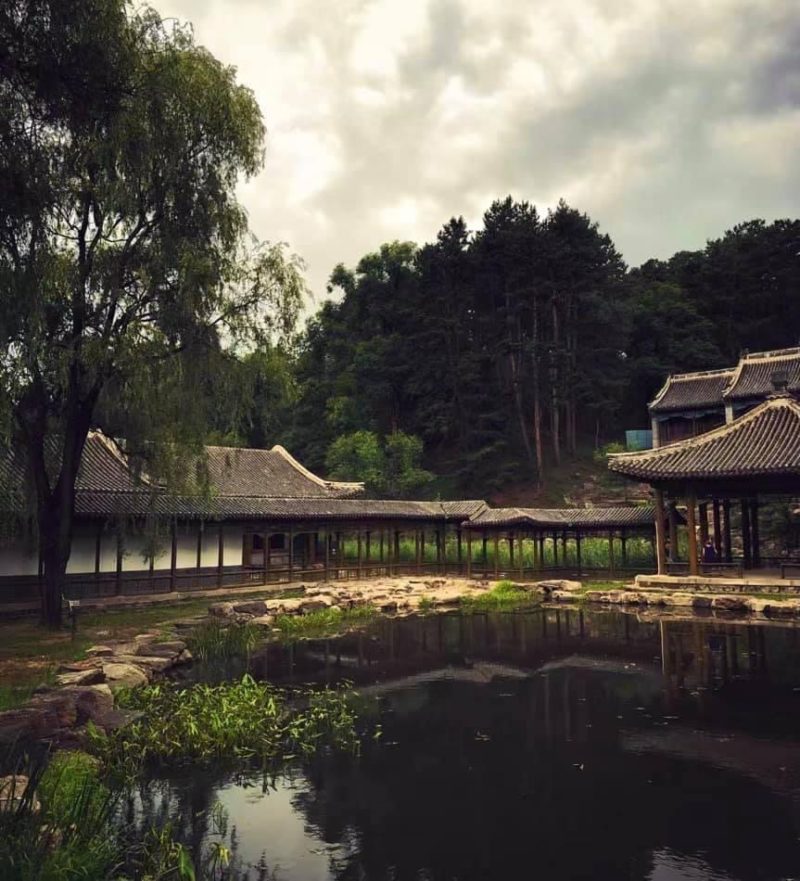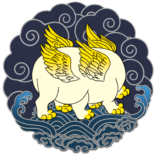
The Five Branches of the Daoist Traditions
The pre-Han and post-Han Daoism are rather different. Lao Zi 老子, Zhuang Zi 莊子 and Lie Zi 列子 were not the founders of Daoism. They not only lived in different eras, but also had very different approaches to Daoism. They were grouped as representatives of 道家 Dào Jiā (specialists in Dao) because they are considered the most brilliant Daoist thinkers among the other pre-Han Hundred Schools of Philosophers 諸子百家 (Zhū Zǐ Bǎi Jiā). The pre-Han China was a golden age of academic freedom and creativity in China comparable to renaissance in Europe.
Lao Zi, Zhuang Zi and Lie Zi’s Daoism was not a religion or moral standards. It is more like a way of living one’s life according to the laws of nature — the law of least frictions, the law of gravity, the law of diversity, etc.
Post-Han Daoist traditions evolved into something else through time — and this is not the Daoism that I discuss here. In the prehistoric times, Daoist traditions were grounded in five branches, and not all of these branches are esteemed equally from a Daoist perspective. The following has a descending order:
Shan 山 — Hermitism / Self-Cultivation
The highest level of Daoist practices. Hermitism does not literally mean dwelling in the mountains and avoiding the crowds. The highest form of hermitism means consistent self-cultivation, although it helps to practice self-cultivation in the mountains. The character 山 “mountain” is used to signify the traditions of various life-nourishing methods, including:
- Ingesting local, seasonal foods according to the environment’s energies and the person’s constitution, drinking unpolluted water from its source, and making herbal wine and elixir to maintain the balance of the body’s system.
- Dao Yin 導引 / Cultivating and Guiding Qi — practices such as Qi Gong, Tai Ji, meditation, breath work, etc. to allow the body to heal itself passively.
- Martial art — this is the next level of practice that is beyond maintaining health. The body is beaming of Qi and can be used to protect the person actively. Masters will not teach their disciples martial art before their Qi foundation is solid.
Yi 醫 — Clinical Practice
Practices of Chinese medicine, including but not limited to acupuncture, touch needling, moxa, cupping, Gua Sha, bleeding, bodyworks, herbology, and the shamanic ritualistic healing method — 祝由 Zhù Yóu.
Ming 命 — Chrono-anthropology
命 Mìng can be translated as life, destiny, or fate. Based on the precise location and local birth time of a person, a chronobiologist is able to calculate the projectory of person’s relationships with his/her environments and other people through the person’s lifetime. There are many schools and styles of birth chart rading, Suàn Mìng 算命. The most famous ones are Zǐ Wēi Dǒu Shù 紫微斗數, Zǐ Píng Tuī Mìng 子平推命, Xīng Píng Huì Hǎi 星平會海, Dī Tiān Suǐ 滴天髓. These Chinese astrological systems are very complex, and each style would require long time practice to master. Layers of meanings can be interpreted based on the various ways of calculation.
Xiang 相 — Face and palm reading
Daoists believe that each individual’s physical features reveal one’s unique psychological and cosmological constitutions. Face and palm reading are the most commonly used ones. This is not unique to the Chinese culture.
Bu 卜 — Oracles
Prior to a major affair or making important decisions, ancient people often resorted to oracles. Using straws/yarrow stems (for events of Yang qualities), turtle shells, and bones (for events of Yin qualities) as ritual tools to help predict the possibilities of results of a major future event. This is the lowest form of Daoist practice because this is the most passive involvement humans can have with their fate. Oracles require complete surrender and vulnerability of the participants, allowing oneself to obey and follow the subtle force of the cosmos vulnerably. Whether results of the oracles are “auspicious” or “ominous”, one has to have faith in the oracles and follow its guidance till the end.
Classical Chinese medicine is rooted in these five Daoist branches. Practicing Chinese medicine is only one aspect of the cultivation activities. It would be helpful to advance one’s knowledge and skills in the rest of the categories. It enriches this medicine by expanding our dimensions into the unknown realms. This is the ultimate motive of practicing Chinese medicine.
Daoist Cultivation Activities
Music
Guqin 古琴 is an ancient musical instrument invented for the purpose of cultivation. Unlike the modern Guqin strings made of metal threads, ancient Guqin strings were made of silk. The purpose of playing Guqin was not to entertain the audience, but to allow any stagnant Qi in the body to be regulated and released.
Go
The design of Go completely reflects the core principle of Daoism. The black and white stones represent Yin and Yang, and the rule of surrounding your opponent’s stones and take them off the board signifying the transitioning of the two phases. The ancient Daoists played Go to cultivate patience, intelligence, and strategizing skills. It is perhaps the most flexible and challenging game ever created.
Calligraphy
It is true that one’s character can be revealed from one’s handwritings. Writing with a paint brush is drastically different from writing with a pen or pencil. A paint brush enables the calligraphers to express their character with a lot more flexibility and creativity than a pen or a pencil can. Ancient Chinese believed that even a highly skilled calligrapher cannot write beautiful characters if they are not cultivated well enough. Practicing skills is merely the basics of calligraphy. One must cultivate his inner quality to be considered a respected calligrapher.
Painting
Ancient Chinese believed that a scholar’s painting skills reflect their inner cultivation levels. Even if a person is not professionally trained as a painter, the pictures that the person drew should be distasteful.
Tea Ceremony
Tea drinking has been a Chinese cultural tradition since the ancient times. It was introduced to Japan during Tang Dynasty (around 600 AD) and has become a ceremonial tradition among the Buddhist monks.
Unlike the modern way of drinking only the seeped juice from tea leaves, the ancient Chinese ingested tea leaves, too. Tea leaves were dried, compressed, then baked, powdered, blended into boiling water, and whisked into a foamy drink — very similar to the way Japanese drink mocha tea. The ancient Chinese believed that each type of tea carries distinctive energies absorbed from its environments. Floral teas are light and uplifting, therefore usually served in spring and good for people with stagnation. White tea, unprocessed green tea and tea grown in high altitude are more cooling, therefore usually served in summer and good for people with excessive internal heat. Baked green tea and yellow tea are slightly warm and moderate in nature, therefore can be served in any season. Rock tea and unprocessed black tea are harsh and slightly cold in nature and have a slight pungent flavor, therefore can be served to people with stronger constitutions. Fermented black tea is dense and warm in nature, therefore is great for cold winter days.
Flow Arrangement
This has been a cultivation activity among the scholars since 600 AD. The purpose of flower arrangement is to create a soul-nourishing mini landscape with seasonal flowers and plants. Unlike the flower arrangements that you usually encounter at office front desks or hotel reception stations, authentic Chinese flower arrangements should look as natural as possible, as if the plants are growing from the container.

